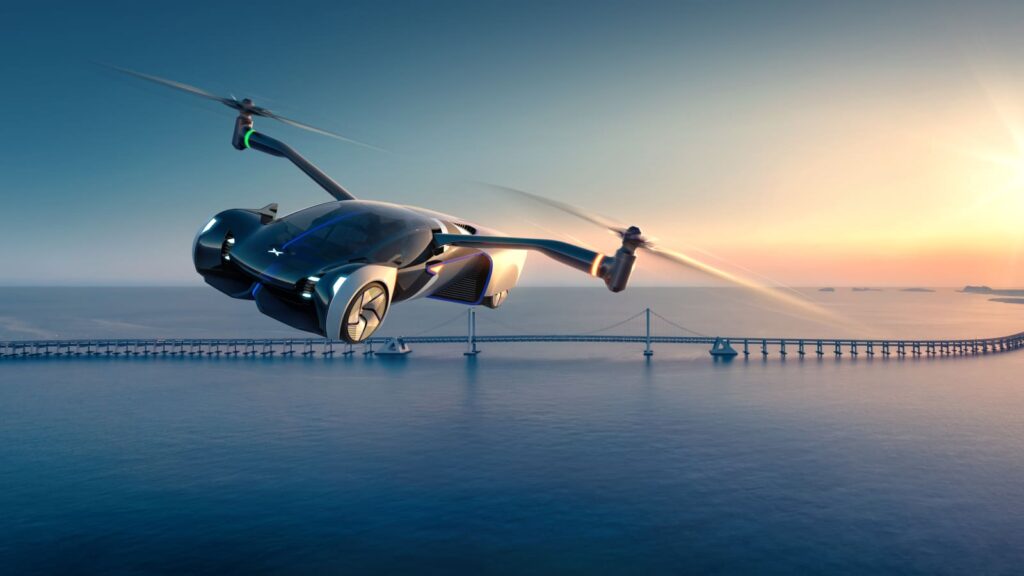
In an era characterized by rapid technological advancements, societal shifts, and environmental challenges, the question “What will the future look like?” has never been more relevant. As we contemplate into the horizon of the unknown, it’s crucial to explore the trends and possibilities that may shape our world in the coming years. This comprehensive guide will delve into various aspects of the future, from technology, sustainability, quests for immortality to the evolution of work and culture.
So let’s start. Let’s try to decipher what the future brings.
First, of course – we need to start with technology, digital revolution and artificial intelligence.
Related: What Will World Look Like In 2050?
Related: What Will Happen To Earth In 2025?
Related: How Will The World Look Like in 2030?
Related: What Will Humans Look Like In 1000 Years?
Related: What Was Life Like 1000 Years Ago?
The Digital Revolution

One of the most profound transformations on the horizon is the increasing integration of artificial intelligence (AI) and automation into various aspects of our lives. AI-powered technologies are poised to revolutionize industries, from healthcare and finance to transportation and education. Businesses are harnessing the power of AI to streamline operations, improve customer experiences, and gain valuable insights from data.
Artificial intelligence, once confined to science fiction, is now a tangible force in our daily lives. As algorithms become increasingly sophisticated, they enable machines to perform tasks that were once exclusive to humans. In healthcare, AI aids in diagnostics and treatment recommendations, potentially improving patient outcomes. In finance, AI algorithms analyze vast datasets to make real-time trading decisions. This not only impacts businesses but also the global economy.
However, while AI is surely bringing a lot to the table for many industries, it could also have negative impact on our lives. Already we’re seeing challenges with many different aspects of content creation. Whether we’re talking about painting, 3d modeling or just writing, in near future AI could completely replace those activities and thus jobs for people.
Additionally, AI is now capable of pretty advanced programming and in future we could easily imagine how one AI will program another AI and they will be able to develop better applications than best programmers today. This could have, unimaginable consequences for whole technology sector.
And all of this is already available with common computers. What will happen when quantum computing becomes normality?
Recommendation: If you'd like to know more about the future and AI we would highly recommend following book: "AI 2041: Ten Visions for Our Future"
Quantum Computing
Quantum computing, often heralded as the next frontier of computing, promises to solve complex problems at speeds unimaginable with classical computers. This technology holds the potential to revolutionize fields like cryptography, materials science, and drug discovery. As quantum computing continues to advance, we can expect it to reshape industries and open new frontiers in scientific research.
Quantum computers, unlike classical computers that use bits, utilize quantum bits or qubits. This allows them to perform certain calculations exponentially faster. In the realm of cryptography, quantum computing could potentially crack current encryption methods, necessitating the development of quantum-resistant encryption. This could represent enormous problems if, for example one country develops and standardizes quantum computing much faster than other countries. In that case, one country could have significant advantage over whole world.
In materials science, quantum computing can simulate the behavior of molecules and materials with unprecedented accuracy. This has profound implications for drug discovery, as researchers can more efficiently identify new compounds and treatments. The potential applications of quantum computing are vast and include optimizing supply chains, solving complex optimization problems, and even revolutionizing artificial intelligence.
Robotics and Human-Machine Interaction

Robotics is no longer confined to industrial settings. Robots are increasingly becoming a part of our daily lives, from robotic vacuum cleaners and delivery drones to robotic companions for the elderly. Robots are now developed even for our love life.
As these technologies advance, they have the potential to revolutionize healthcare, home automation, and even education.
In healthcare, surgical robots assist surgeons in performing precise procedures, reducing the risk of complications. In education, robots can serve as interactive tutors, helping students with personalized learning experiences. However, the integration of robotics also raises questions about job displacement and ethical considerations.
Additionally, robots could completely change social connections and love life as we’ve written extensively in this article.
Human-Robot Collaboration
The future of robotics isn’t just about robots replacing humans but working alongside them. Collaborative robots, or cobots, are designed to assist humans in various tasks, particularly in manufacturing and healthcare. These robots can enhance productivity and safety by handling repetitive or dangerous tasks, allowing humans to focus on more creative and complex aspects of their work.
The development of emotionally intelligent robots is another frontier in human-robot interaction. These robots aim to understand and respond to human emotions, making them valuable in fields such as therapy, caregiving, and customer service. However, ethical concerns about privacy and the boundaries of human-robot relationships will need to be addressed. However, we don’t see this happening. Nobody is addressing those challenges. Not yet at least. There are no policies with regards to robots that will be used as social companions.
That leads us to virtual reality and simulation at some point in time.
Virtual Reality and Simulated Worlds

Virtual reality (VR) has evolved significantly, offering immersive experiences in various fields, from gaming and entertainment to education and therapy. Advanced VR headsets and haptic feedback devices create a sense of presence, allowing users to interact with digital environments as if they were real.
In the future, VR could transform education by enabling students to explore historical events or visit distant planets through immersive simulations. Therapy and rehabilitation can benefit from VR by providing controlled and engaging environments for patients. However, VR also raises big questions about addiction and the blurring of virtual and physical realities.
Potential Simulated Worlds
The concept of simulated worlds, often discussed in the context of philosophical debates and science fiction, poses intriguing questions about the nature of reality. As technology continues to advance, the possibility of creating highly realistic virtual simulations becomes more feasible.
Simulation theory suggests that our reality could be a computer-generated simulation, similar to a highly advanced video game. While this remains a speculative idea, it highlights the potential of future technologies to create simulated worlds indistinguishable from reality.
In conclusion, the future promises a dynamic landscape of love life shaped by technology, an increasingly symbiotic relationship between humans and robots, the transformative potential of cryptocurrency, and the immersive possibilities of virtual reality. As we navigate these evolving frontiers, the question of whether we might one day reside in simulated worlds challenges our understanding of existence itself. Embracing these developments with curiosity and ethical consideration will be essential as we continue to shape the future.
And one thing that could potentially shape the future in most transformative way (both negative and positive) is for sure the point of singularity.
Technological Singularity: When Will It Arrive?
The technological singularity is a concept that has captured the imaginations of scientists, futurists, and science fiction enthusiasts alike. It refers to a hypothetical point in the future when technological progress accelerates to the extent that it surpasses human comprehension and control. At this juncture, it is believed that artificial intelligence could become self-improving, leading to exponential growth in intelligence and capabilities.
Predicting the Timeline
Predicting when the technological singularity might occur is a challenging task. Some experts argue that it is inevitable, while others remain skeptical of the concept altogether. The timeline for the singularity remains highly speculative and varies depending on who you ask.
Ray Kurzweil, a prominent futurist and inventor, has famously predicted that the singularity will occur by the year 2045. He bases this prediction on the exponential growth of technology, especially in the fields of artificial intelligence and nanotechnology. According to Kurzweil, this acceleration will reach a point where our current understanding of progress becomes obsolete.
However, it’s crucial to note that this prediction is just one perspective, and the timeline for the singularity remains uncertain. Some believe it could happen sooner, while others argue it might take much longer—or may never occur at all.
Ethical and Existential Considerations
The idea of a technological singularity raises profound ethical and existential questions. If and when it arrives, it could lead to unprecedented advances in fields such as medicine, science, and artificial intelligence. However, it could also pose significant risks, including the potential loss of control over superintelligent machines.
Addressing the ethical dimensions of the singularity is a crucial aspect of preparing for this hypothetical event. Ensuring that the development of advanced technologies aligns with human values and interests will be essential in navigating the uncertainties that the singularity presents.
As we contemplate the possibility of a technological singularity, it’s essential to approach it with a balanced perspective. While we can’t predict with certainty when or if it will occur, we can prepare by fostering responsible innovation, promoting ethical AI development, and engaging in discussions about the potential societal impacts.
Ultimately, the concept of the technological singularity reminds us of the boundless potential of human ingenuity and the importance of responsible and ethical technological advancement. While we may not know when the singularity will arrive, we can strive to shape a future where technology continues to benefit humanity while mitigating the risks and uncertainties that lie ahead.
Sustainable Living

The future will undoubtedly be greener, with a growing emphasis on renewable energy sources such as solar, wind, and hydroelectric power. The transition to clean energy is essential in mitigating climate change and reducing our reliance on fossil fuels. As technology advances, we can anticipate more efficient and accessible renewable energy solutions.
Renewable energy sources have gained significant momentum as the world acknowledges the urgent need to combat climate change. Solar panels are becoming more efficient and cost-effective, making them accessible to a wider range of consumers. Wind turbines are evolving to capture more energy from the wind, and energy storage solutions are improving, allowing for consistent power availability even when the sun isn’t shining, and the wind isn’t blowing.
In addition to solar and wind, hydroelectric power remains a reliable and efficient source of clean energy. Advances in hydroelectric technology, including smaller-scale installations and more environmentally friendly designs, are making it an attractive option for regions with ample water resources.
Nonetheless, current fuels like oil and gas will not be replaced just like that. Most of the world is still powering everything with coal, oil and gas and this will stay for some years to come. If not forever. Because, even though wind turbines do produce electricity in different and greener way, they also have big negative consequences on different animals (like birds for example). Namely, one of the significant hurdles confronting the wind energy sector revolves around the possibility of turbines causing detrimental impacts on wildlife, both through direct means such as collisions and indirectly through factors like noise pollution, habitat degradation, and diminished survival or reproductive rates.
Transportation in the future?

Transportation is on the cusp of a significant transformation, driven by the imperative of sustainability. The environmental impact of traditional transportation methods, such as gasoline-powered cars and fossil fuel-based aviation, has pushed society toward more eco-friendly alternatives.
Electric cars have gained immense popularity, and the future of transportation is probably electric. Advances in battery technology are extending the range of EVs, making them more practical for everyday use. Additionally, a growing network of charging stations is making it increasingly convenient to own an EV.
However, there are big concerns about big cobalt mines in Africa. Cobalt is used for producing batteries, and world already has a problem with non-ethical and almost slave like mining of cobalt. And we only have several percent of electric vehicles on the road. Thus, we could expect significant challenges in this field in the future.
Then we’re coming to hyperloop.
The dream of ultra-fast ground transportation is becoming a reality with developments like the Hyperloop and high-speed rail systems. Hyperloop pods could theoretically travel at near-supersonic speeds in low-pressure tubes, dramatically reducing travel times between cities. High-speed rail networks, already prevalent in countries like Japan and France, are expanding to connect more regions.
Autonomous Transportation
The future of transportation is also closely tied to autonomy. Autonomous vehicles (AVs) and drones are poised to revolutionize how we move people and goods.
Self-driving cars and trucks are no longer science fiction. Companies like Waymo (formerly known as the Google Self-Driving Car Project) and Tesla are actively developing and testing autonomous technology. AVs have the potential to reduce traffic accidents, increase transportation efficiency, and provide mobility solutions for the elderly and disabled. However, regulatory and safety challenges must be overcome before widespread adoption.
Personal Air Mobility
The future of transportation may also include personal air mobility solutions. Flying cars, electric vertical takeoff and landing (eVTOL) aircraft, and air taxis are all under development.
Several companies are working on flying car prototypes that can operate both on the ground and in the air. These vehicles could alleviate traffic congestion in densely populated cities and offer a new dimension to urban transportation.
For example – electric vertical takeoff and landing (eVTOL) aircraft resemble compact helicopters and promise on-demand urban air mobility. Companies like Joby Aviation and Lilium are developing eVTOL aircraft that can carry passengers short distances within cities.
Then we’d also potentially have so called air taxis.
However this represents big problems regarding safety and noise in the air. Nobody would like to live in the world where you’re surrounded with constant noise in the air.
Space Travel
Looking even further ahead, the future of transportation may extend beyond Earth. The burgeoning commercial space industry, led by companies like SpaceX and Blue Origin, is working to make space travel more accessible and affordable. With the possibility of lunar tourism and the colonization of Mars, humanity’s transportation options may soon extend to the cosmos.
In conclusion, transportation is undergoing a profound evolution. From sustainable mobility and autonomous vehicles to personal air mobility and the potential for space travel, the way we move from place to place is on the verge of transformation. As we navigate these changes, it’s essential to prioritize sustainability, safety, and accessibility to ensure that the future of transportation benefits society as a whole.
But with all those advancements in different technologies we’re coming to big challenge. And this is potential of so called technological isolation.
The Challenge of Technological Isolation

While technology has the power to connect us in unprecedented ways, it also presents a paradox: the risk of isolation. As we become more immersed in our digital worlds, there is a growing concern about the erosion of face-to-face interactions and genuine human connections.
Social media platforms, for instance, have redefined how we interact, but they can also contribute to feelings of loneliness and social isolation. Scrolling through endless feeds can create unrealistic expectations and a sense of inadequacy, potentially leading to mental health issues.
Related: Information Overload and Mental Health
The Loneliness Epidemic
The digital age has given rise to what some have termed a “loneliness epidemic.” Despite being more connected online, many people report feeling lonelier than ever. The constant comparison to others on social media, the replacement of in-person interactions with virtual ones, and the addictive nature of technology can all contribute to this sense of isolation.
Isolation has far-reaching consequences, impacting mental health, physical well-being, and overall life satisfaction. Research has shown that chronic loneliness can increase the risk of depression, anxiety, and even physical health problems such as heart disease.
The challenge of technological isolation calls for a delicate balance between our digital lives and our physical, real-world interactions. While technology can facilitate connections with friends and family across the globe, it’s essential to prioritize face-to-face interactions and maintain a healthy relationship with screens.
Efforts to combat isolation may include setting boundaries on screen time, practicing mindfulness to disconnect from digital distractions, and actively seeking out opportunities for in-person socialization. Schools, workplaces, and communities can also play a role by promoting technology use that enhances rather than hinders human connection.
In conclusion, while technology offers incredible opportunities and conveniences, it also presents the challenge of isolation. Recognizing the importance of maintaining meaningful, in-person connections alongside our digital lives is crucial for ensuring a future where technology enhances, rather than diminishes, our overall well-being and sense of belonging in society.
Potential of Self-Destruction in the Future?

While the discussions about the future often center around technological advancements, progress, and possibilities, there’s an unsettling undercurrent—a concern that humanity may be its own worst enemy. The prospect of self-destruction looms ominously, casting a shadow over the aspirations of a brighter future.
So we have the following threats in the future.
Nuclear Weapons: Perhaps the most immediate and devastating existential threat is the continued existence of nuclear weapons. Despite the end of the Cold War, the world remains armed with thousands of nuclear warheads. The potential for accidental launch or the deliberate use of these weapons in conflicts presents an ever-present danger. Especially now with with war in Ukraine.
Environmental Crisis: Climate change, deforestation, loss of biodiversity, and pollution are existential threats linked to human activity. Failing to address these issues could lead to catastrophic consequences, including extreme weather events, food shortages, and displacement of millions.
Biological and Technological Risks: Advances in biotechnology and artificial intelligence also pose significant risks. The accidental or deliberate release of a deadly pathogen, misuse of AI for malicious purposes, or a catastrophic cyberattack could lead to widespread harm.
This all leads us to the topic of population overall.
Decline in Birth Rates
One of the emerging trends that may reshape the future is the declining birth rates observed in many parts of the world. This phenomenon is characterized by fewer births per woman and is influenced by a complex interplay of factors.
Factors Contributing to Declining Birth Rates
Delayed Parenthood: Economic pressures, including the high cost of living, housing, and education, are causing many couples to delay parenthood. Pursuing careers and financial stability before having children has become a common choice.
Childcare Costs: The rising cost of childcare and the challenges of balancing work and family life can discourage some couples from having more children.
Changing Gender Roles: As gender roles evolve, more women are pursuing higher education and careers, which can lead to smaller family sizes or delayed family planning.
Urbanization: The migration of populations to urban areas often leads to smaller family sizes as urban living tends to discourage large families due to space constraints and the demands of city life.
Advancements in Contraception: Improved access to contraception and family planning resources has empowered individuals and couples to make informed decisions about family size.
Implications for the Future
The declining birth rates have several significant implications for the future:
Aging Population: As birth rates decline, populations in many countries are aging. This demographic shift can strain social safety nets, healthcare systems, and pension programs, as there are fewer young workers to support an aging population.
Economic Impact: A declining birth rate can have economic repercussions, including reduced labor force growth, potentially leading to slower economic growth.
Cultural Changes: Changes in family structures and dynamics may become more pronounced. Smaller family sizes can lead to shifts in societal norms and values.
Environmental Benefits: On the positive side, lower birth rates can help reduce population growth, easing pressures on the environment and natural resources.
Talking about population and birth rates, this leads us to potential quest for prolonged longevity in the future.
Prolonging Life and the Quest for Immortality

Advancements in medicine, genetics, and biotechnology are pushing the boundaries of human lifespan. While immortality may remain a concept shrouded in science fiction, the prospect of living longer, healthier lives is becoming increasingly plausible.
In the future (and already now to some aspect) we’ll have the following:
Anti-Aging Therapies: Ongoing research into anti-aging therapies, such as senolytics (drugs that target aging cells), telomere extension, and regenerative medicine, holds promise for extending the healthy years of life.
Precision Medicine: Tailored medical treatments based on an individual’s genetic makeup could optimize health, reduce susceptibility to diseases, and enhance the quality of life in later years.
AI-Driven Healthcare: Artificial intelligence (AI) and machine learning are revolutionizing healthcare, enabling more accurate diagnoses, personalized treatment plans, and early detection of diseases.
While those are all biological and medicinal advancements, this leads us to potential of digital immortality.
The Quest for Digital Immortality
In the realm of technology, there is a growing interest in digital immortality—preserving one’s consciousness or digital persona beyond physical death.
Mind Uploading: The concept of transferring one’s consciousness or neural patterns into digital form (mind uploading) raises questions about whether a digital replica can truly replicate one’s essence and identity.
Virtual Avatars: Virtual reality and AI may enable the creation of advanced digital avatars that mimic human behaviors and personality traits, providing a semblance of digital immortality.
The Uncertainty of Immortality
While the idea of achieving immortality is alluring, it remains uncertain whether it will ever be realized. Many scientific, ethical, and philosophical hurdles must be overcome to approach such a possibility.
And with all this mentioned we need to conclude with potential for emotional challenges and depression in future world.
Navigating a Future of Emotional Challenges

While the future holds promise in terms of technological advancements and opportunities, it may also bring forth an unsettling trend—increased rates of sadness and depression. Understanding and addressing these emotional challenges is paramount for ensuring the well-being of individuals and society as a whole.
Factors Contributing to Emotional Distress
Digital Disconnect: Despite the interconnectedness brought about by technology, paradoxically, it can also lead to feelings of isolation. The constant presence of screens and virtual interactions may detract from genuine, in-person human connections.
Loneliness in Urban Settings: The rapid urbanization of populations can result in crowded cities where people may feel lonely amidst the bustling crowds, leading to emotional distress.
Financial Stress: The pursuit of financial stability in an increasingly competitive world can contribute to anxiety and depression. Economic pressures may lead to long working hours and job insecurity.
Income Inequality: Rising income inequality can amplify feelings of injustice and despair among those who perceive that they are being left behind economically.
Information Overload: The constant bombardment of information and notifications from technology can be overwhelming, potentially leading to mental exhaustion and anxiety.
Social Comparison: Social media platforms often present an idealized version of others’ lives, contributing to feelings of inadequacy and low self-esteem.
Finalization: Will we have balanced future?

While technological progress and societal advancements offer immense potential, they also come with emotional challenges. Cultivating a balanced future means acknowledging these challenges and prioritizing the mental and emotional well-being of individuals and communities.
In conclusion, the future is a complex tapestry woven with both opportunities and emotional challenges. Recognizing the potential for increased sadness and depression is the first step toward creating a future where people are not only physically healthy and materially prosperous but also emotionally resilient and content. By fostering a society that values mental health and supports those in need, we can strive for a future that is not just technologically advanced but also emotionally fulfilling.
Hopefully we’ll achieve this balance before we destroy ourselves and the whole world.




















